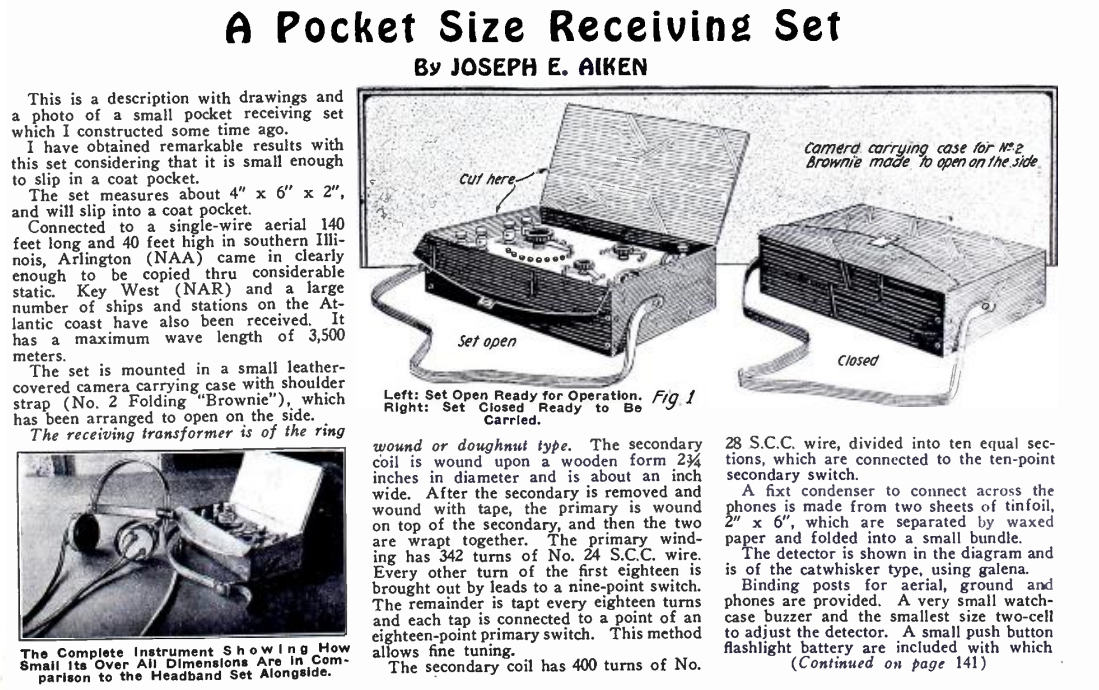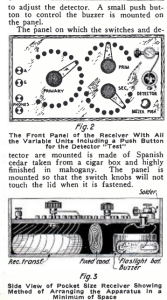
 A hundred years ago this month, the September 1919 issue of Radio Amateur News carried this “pocket size” (for large pockets, presumably) crystal set. According to the author, the set was, from Illinois with a 140 foot antenna, able to pull in NAA Arlington, NAR Key West, as well as a large number of ships off the Atlantic coast. Tuning was accomplished through taps on both the primary and secondary coils, and could tune to a maximum wavelength of 3500 meters (86 kHz).
A hundred years ago this month, the September 1919 issue of Radio Amateur News carried this “pocket size” (for large pockets, presumably) crystal set. According to the author, the set was, from Illinois with a 140 foot antenna, able to pull in NAA Arlington, NAR Key West, as well as a large number of ships off the Atlantic coast. Tuning was accomplished through taps on both the primary and secondary coils, and could tune to a maximum wavelength of 3500 meters (86 kHz).
The radio was mounted in a leather-covered carrying case for a No. 2 Folding Brownie Camera. It was set so that one side could be opened completely, allowing access to controls. The detector was a galena crystal, and the set contained a test buzzer for use in finding the “sweet spot” on the crystal. A fixed capacitor was made of two 2×6 inch sheets of tinfoil, separated by wax paper and folded.
